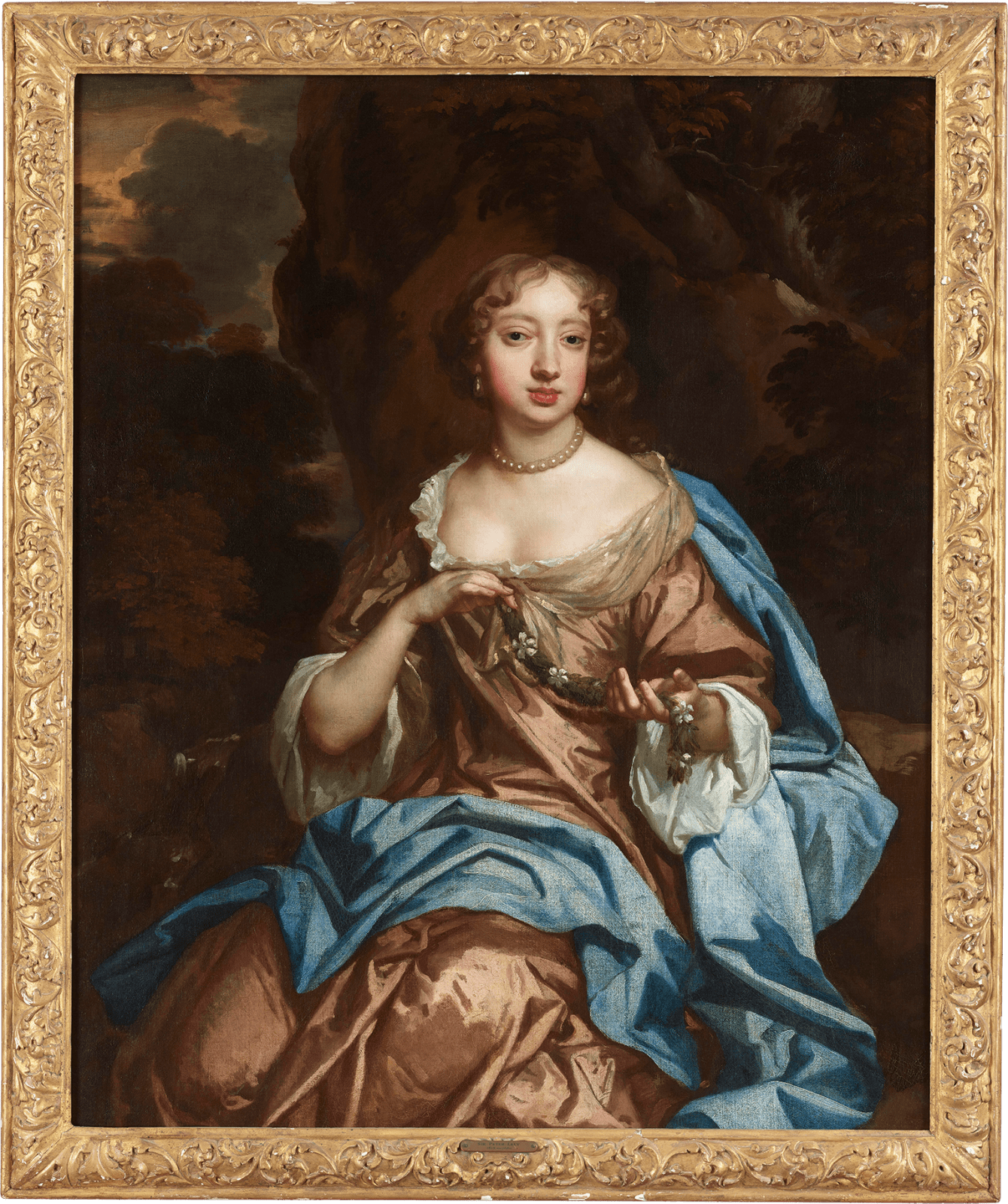
Peter Lely
We are grateful to Diana Dethloff and Catharine MacLeod for confirming the attribution to Sir Peter Lely upon first-hand inspection of the painting. It is to be included in their forthcoming catalogue raisonné of Lely’s work.
This recently discovered portrait by Sir Peter Lely was painted in around 1670 when he was at the height of his artistic powers. As the leading portraitist at the court of King Charles II, Lely painted nearly everyone of consequence and his portraits define an era characterised by flamboyance and excess.
The subject, who is presently unidentified, is shown seated in a landscape wearing a shimmering silk gown with a blue drape across her lap. This style of dress was a fashionable adaptation of everyday wear and consisted of a ‘nightgown’, which in its informality indicated the subject’s wealth and privileged status. Etiquette at this date dictated that someone of a lower social rank should never dress more informally than their superiors, so the act of being portrayed in a type of ‘undress’ was in fact an indicator of power and status. This style of dress was also favoured for its relative simplicity and classical references which transcended changes in court fashion. The skillful depiction of the folds in the fabric and the play of light on its surface enhances the suggestion of movement which is further emphasised by the positioning of the subject’s left hand which reaches out toward the viewer. The garland of stylised orange blossom presented by the subject may indicate that this portrait was painted to celebrate a marriage – orange blossom has been associated with marriage since antiquity as a symbol of fertility, chastity, and purity.
Lely’s supreme talent as a portraitist is discernible in this work which seamlessly blends loose yet confident brushwork with a combination of rich colour and subtle flesh tones. One of the most dynamic areas of artistic ingenuity is the subject’s left shoulder, which is daringly constructed of little more than a series of quick brushstrokes. The broad, swift handling of the dress is contrasted with the delicate treatment of the subject’s head and shoulders which radiate against the dark backdrop emphasising the illusion of humanity.
Close inspection of the portrait reveals that the artist changed his mind numerous times throughout the painting process. The subject’s right arm which delicately holds the floral garland, for example, was originally placed horizontally across her lap but was subsequently changed to an upright position. The fingers on the subject’s left hand were also shortened as evinced by the pentimento visible on the tip of the left index finger.
Provenance
Private collection, UK.
- Tumblr
This website uses cookies
This site uses cookies to help make it more useful to you. Please contact us to find out more about our Cookie Policy.


